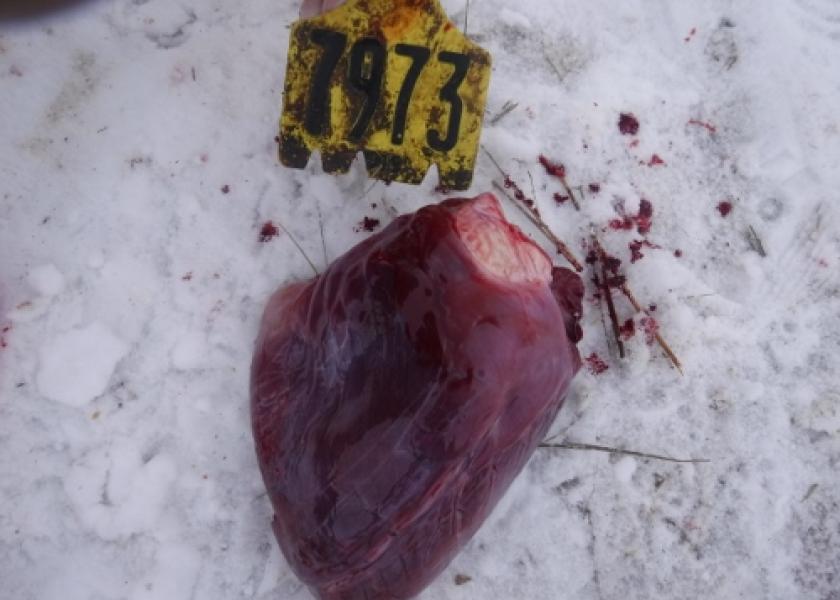Post-Mortem of a Feedlot Steer: Answer



The Feedlot Health Management Services team diagnosed this case as a representative example of serous atrophy of fat, which is typically a seasonally dependent disease that is very important to recognize as it may relate to underlying management deficiencies.
Pathogenesis:
In extremely cold temperatures, calves require relatively more dietary energy to maintain normal body functions. A negative energy balance results if the diet does not meet this net energy for maintenance requirement. As energy reserves are exhausted, fatty acids are liberated from extrahepatic fat depots (e.g., cardiac, mesenteric, and renal fat) and protein catabolism commences. Over time, cattle become recumbent to conserve energy and core body temperature declines, which diminished the efficiency of skeletal muscle and makes it more difficult for the animal to rise. Once the core body temperature reaches approximately 22°C (72°F), the heart becomes asystolic (Whiting et al., 2012).
Epidemiology:
- More commonly observed in light-weight calves on low energy backgrounding rations.
- Typically observed in the coldest winter months, and occurs most often in geographic regions that experience long durations of extremely cold weather.
- Some cases are associated with the use of straw bedding, as some newly arrived calves will eat the straw rather than the higher energy ration from the bunk.
Ante-Mortem Clinical Signs:
- Animals will commonly exhibit one or more of the following signs:
- Severe emaciation
- Anorexia (appear gaunt) in some, but not all, cases
- Note: some animals may appear full due to consuming large amounts of low energy straw
- Physical weakness and muscle atrophy
- Difficulty standing or walking
- Little to no external fat can be observed (via sight or palpation)
- Often remain bright and alert and may attempt to stand, but may be unable to rise
Management:
The primary objective is to identify animals prior to them becoming recumbent. In many cases, simply moving the animal to a pen without straw for bedding and top dressing the ration with long stem good quality hay is enough to change the behaviour. Once animals in a negative energy balance become recumbent, management includes supportive care and possibly antimicrobial therapy to treat underlying diseases. It should quickly be determined if this is an isolated case, or if there are other cohorts or an entire population affected. If multiple animals appear affected, immediate ration changes are paramount to provide more digestible dietary net energy.
Post-Mortem Lesions:
- Upon observation of the heart (see Fig. 1), typical findings include serous atrophy of the fat at the base of the heart. A gelatinous transformation of the remnants of the cardiac fat has occurred in this case.
- Upon observation of the liver and kidney (see Fig. 2), typical findings often include small and dark liver because of glycogen depletion, and/or absence of peri-renal fat.
- Upon observation of the open abdominal cavity (see Fig. 3), typical findings often include mesentery that is devoid of adipose tissue because of the liberation of triglycerides during the period of negative energy balance.
- A primary diagnosis of serous atrophy of fat is made when there are no lesions associated with other diseases that would explain reduced intake and/or increased energy demands.
References:
Whiting TL, Postey RC, Chestley ST, Wruck GC. Explanatory model of cattle death by starvation in Manitoba: Forensic evaluation. Can Vet J 2012;53:1173-1180.
Post-Mortem Series presented in partnership with Feedlot Health management Services, Okotoks, Alberta. For more information, visit their website at www.feedlothealth.com.
Working with crews at client operations, Feedlot Health conducts post-mortem exams on all feedlot and calf-grower mortalities, using a standard protocol for recording the animal’s history, digital images, and post-mortem findings. The group compiles images and post-mortem findings in a central database, for review by the professional team, as an educational tool and to track disease trends within an operation or across their client base.







